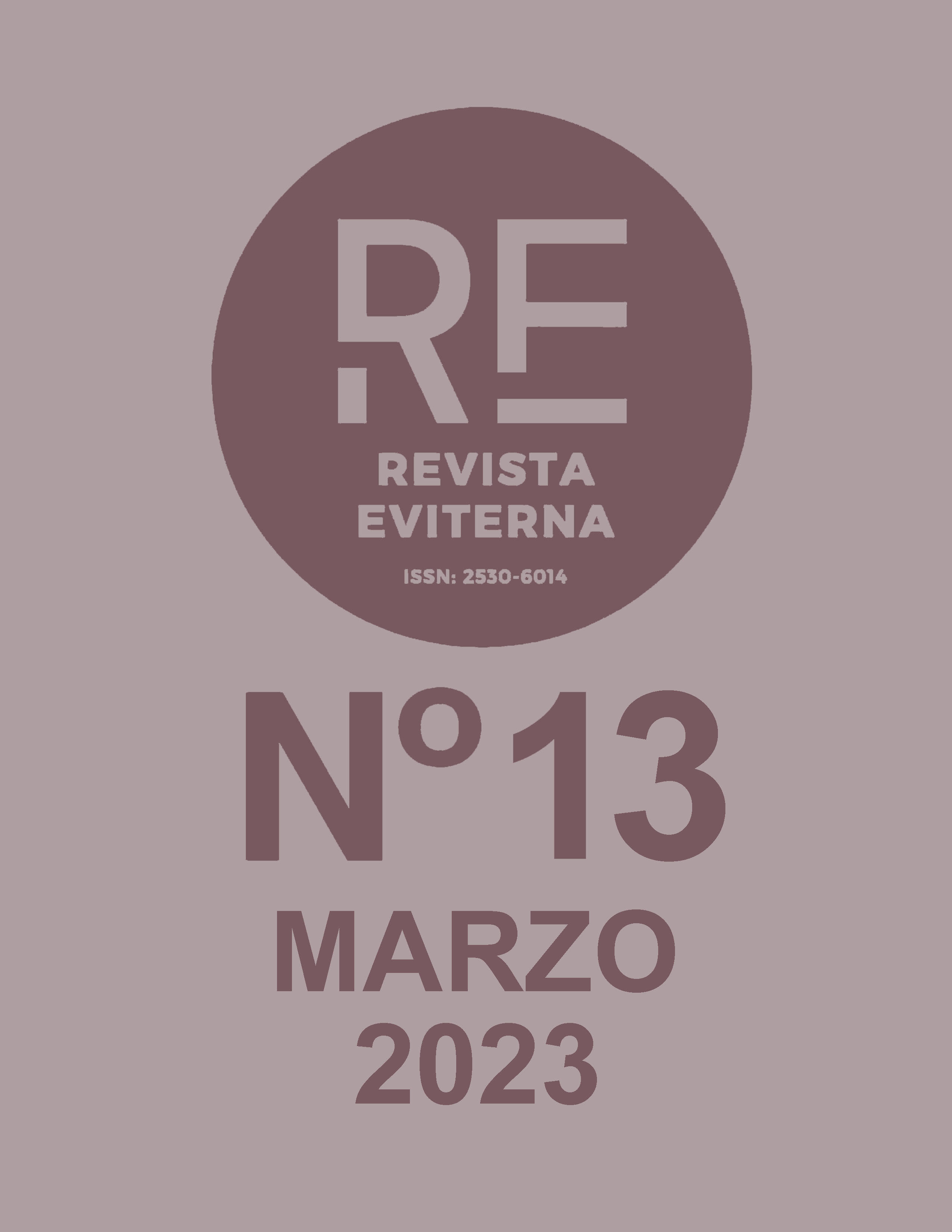The fantastic in Maya Deren
The other alternative to the classic cinema crisis
DOI:
https://doi.org/10.24310/Eviternare.vi13.16416Keywords:
avant-garde, horror, occultism, surrealism, terrorAbstract
American Horror Classical Cinema from the 30s had two alternatives in the 40s, being one of them also inside the established classical parameters that found a new way in Val Lewton’s proposal at the RKO. The other alternative was born in Avant-Garde cinema thanks to Maya Deren’s work. She was a filmmaker, ethnographer, dancer, poet and photographer whose achievements and legacy have inspired several artists and filmmakers in the last seventy years. This text explores Maya Deren’s American independent cinema, analysing her short films Meshes of the Afternoon (1943), At Land (1944) and Ritual in Transfigured Time (1946), in order to expose how Surrealism (Luis Buñuel and Jean Cocteau films mainly) and Occultism (her experience as William Seabrook assistant and her interest in Magic, Cabala and Voudou) helped her to open a new way in Horror and Fantastic Cinema. Deren’s sensitivity to women problems and her love to dance made her film three movies where she shows three different phases of female initiation journey to a higher plane. It must be said that Meshes of the Afternoon was made in close collaboration with her then husband the czech photographer and moviemaker Alexander Hammid.
Downloads
Metrics
Publication Facts
Reviewer profiles N/A
Author statements
Indexed in
-
—
- Academic society
- N/A
- Publisher
- Universidad de Málaga
References
Clark, V., Hodson, M. & Neiman, C. (1988). The Legend of Maya Deren. A Documentary Biography and Collected Works. Volumen I Part Two. Chambers (1942-47). Anthology Film Archives/Film Culture.
Deren, M. (1946). An Anagram of Ideas on Art, Form and Film. The Alicat Book Shop Press.
--- (2004). Divine Horsemen. The Living Gods of Haiti. McPherson & Company.
Elialde, M. (2015). Le chamanismeet les techniques archaïques de l’extase. Éditions Payot.
García Gómez, F. (2007). El miedo sugerente. Val Lewton y el cine fantástico y de terror de la RKO. Centro de Ediciones de la Diputación Provincial de Málaga.
Jacobs, L. (1968). The Rise of the American Film. A Critical History with an Essay Experimental Cinema in America 1921-1947. Teachers College Press-Columbia University.
Hutton, R. (2017). The Witch. A History of Fear, from Ancient Times to the Present. Yale University Press.
Kaplan, E. A. (1998). Las mujeres y el cine. A ambos lados de la cámara. Cátedra.
Kyrou, A. (1963). Le surréalisme au cinéma. Le Térrain Vague.
Lachaman, G. (2013). Una historia secreta de la consciencia. Atalanta.
Noble, J. (2013). The Magic of Time and Space. Occultism in the Films of Maya Deren, Abraxas. International Journal of Esoteric Studies, Special Issue 1.
Pramaggiore, M. (2001). Seeing Double(s). En Nichols, B. (Ed.). Maya Deren and the American Avant-Garde (falta número de página inicial y final del capítulo). University of California Press.
Sánchez-Biosca, V. (2004). Cine y vanguardias artísticas. Paidós.
Seabrook, W. (2005). La isla mágica. Un viaje al corazón del Vudú. Valdemar.
Skal, D. J. (2008). Monster Show. Una historia cultural del horror. Valdemar.
Downloads
Published
How to Cite
Issue
Section
License
All the contents published in Revista Eviterna are subject to the Creative Commons Reconocimento-NoComercia-Compartirigual 4.0 license, the full text of which can be found at <http://creativecommons.org/licenses/by-nc-sa/4.0>
They may be copied, used, disseminated, transmitted and publicly exposed, provided that:
The authorship and original source of your publication (Journal, editorial and URL of the work) are cited.
They are not used for commercial purposes.
The existence and specifications of this use license are mentioned.

Copyright is of two kinds: moral rights and patrimonial rights. Moral rights are perpetual, inalienable, inalienable, inalienable, inalienable and imprescriptible prerogatives.
In accordance with copyright legislation, Revista Eviterna recognizes and respects the moral rights of the authors, as well as the ownership of the economic right, which will be transferred to the University of Malaga for dissemination in open access.
The economic rights refer to the benefits obtained by the use or disclosure of the works. Revista Eviterna is published in open access and is exclusively authorized to carry out or authorize by any means the use, distribution, disclosure, reproduction, adaptation, translation or transformation of the work.
It is the responsibility of the authors to obtain the necessary permissions of the images that are subject to copyright.







12.png)



